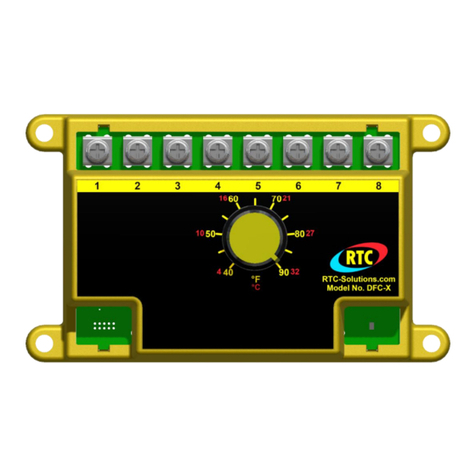
1
DOC# T0001 8.11.2014 DFC-X O&M
4380 Oakes Road, Suite 804
Email:info@RTC-Solutions.com
Model No. DFC-X
DIRECT FIRED DIGITAL TEMPERATURE CONTROL INSTALLATION,
OPERATION, AND MAINTENANCE MANUAL
This manual covers the following products:
Standard direct fired temperature control 0-24VDC output
Direct fired control with integral 40-90°F (4-32°C) dial 0-24VDC output
Temperature senor 40-250°F (4-121°C)
Temperature dial 5 selectable ranges
PWM to 10V output converter
Table of Contents
Overview.....................................................................................................................................................................................................................................................2
Specifications..............................................................................................................................................................................................................................................2
Power Requirements..............................................................................................................................................................................................................................2
DFC Ambient Temperature Limits ......................................................................................................................................................................................................2
DFTS/DFTD Ambient Temperature Limits .......................................................................................................................................................................................2
Accuracy..................................................................................................................................................................................................................................................2
Installation ..................................................................................................................................................................................................................................................2
Wiring..........................................................................................................................................................................................................................................................2
Standard control with remote setpoint................................................................................................................................................................................................2
Standard control with integral setpoint ..............................................................................................................................................................................................4
Optional room space control ................................................................................................................................................................................................................4
Optional multiple setpoint temperature control ................................................................................................................................................................................5
Operation ....................................................................................................................................................................................................................................................6
Start up .................................................................................................................................................................................................................................................... 6
Sequence of operation............................................................................................................................................................................................................................6
Calibration ..............................................................................................................................................................................................................................................6
Troubleshooting .....................................................................................................................................................................................................................................6
DFTS and DFTD Resistance chart ........................................................................................................................................................................................................6

























